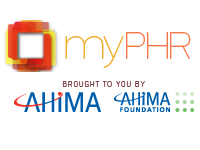 New Consumer Guide Increases Awareness About PHRs
New Consumer Guide Increases Awareness About PHRs
According to InformationWeek, only around 10% of patients use Personal Health Records (PHR). This is often simply because people don’t know they have the option to obtain their medical records and compile their own PHRs. To increase awareness about PHRs, the American Health Information Management Association (AHIMA) has created an online consumer guide that helps acquaint patients with how to access their medical records and best use their personal health records.
The consumer guide provided by AHIMA has the potential to help patients decode critical medical information and become empowered with that information to take charge of their health. It’s generally accepted that once patients know more about their health conditions, they’re able to better work with their doctors to manage those conditions.
PHRs are also useful for doctors. When a new patient brings a PHR to an appointment, the physician is able to immediately assess, with the patient’s help, which procedures and examinations don’t need to be repeated and which new avenues need to be explored. This collaborative effort can improve the doctor-patient relationship and enhance the overall healthcare experience for everyone involved. Doctors know a lot about the human body, and patients know a lot about their own bodies. Teaming up together often produces great results.
AHIMA’s consumer guide includes information about what medical records are, why medical records are useful, how one obtains his or her medical record, how to make changes to a medical record, what a PHR should contain, how to compile a PHR, and how to best use patient portals. AHIMA’s website can function as a one-stop-shop for patients who wish to figure out how to create and use their PHRs.
Although not all healthcare providers offer digital access to medical records for their patients, an increasing number are doing so. Eligible Professionals who participate in a CMS EHR Incentive program will be required to offer electronic medical history information to 50% of their patients, and they’re required to make sure that at least 5% of those patients download the information in stage 2 of the program.
As PHRs slowly become more pervasive with the help of initiatives like AHIMA’s consumer guide, it will be exciting to see how patients take ownership of their health and work collaboratively with doctors to discover and stick to the best treatment plan options. The more informed both doctors and patients are, the healthier we all will be, and that’s definitely a good thing!
About the author: Leslie Johnson is a freelance health blogger and professional writer who primarily writes for http://www.mastersinhealthcare.com/ along with other sites related to health education. Leslie can be reached at: leslie.johnson25dec@gmail.com
